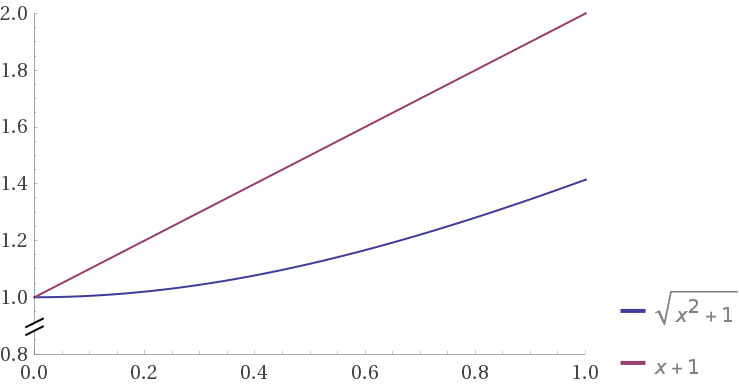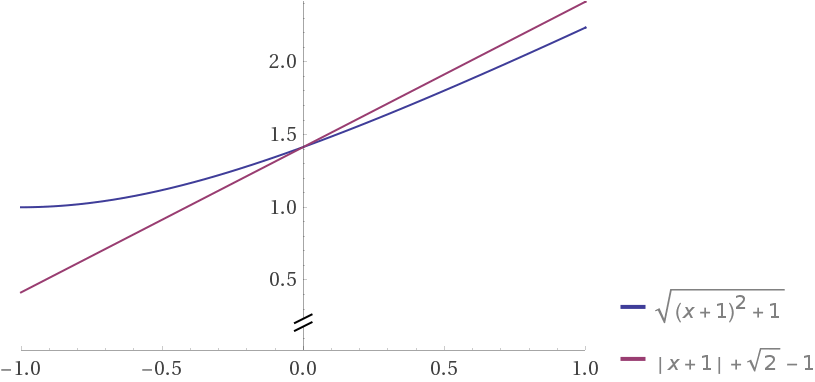Reason behind using Manhattan distance
The highlighted comment was created in this revision.
In this page, I noticed
using Euclidean distance decreased my score against real-world targets considerably
However, having better score is just a result instead of reason. And I've been thinking about the reason why Manhattan works better for years...
Today, something come to my mind. For faster calculation, most of us use SqrEuclidean instead of real Euclidean. This wouldn't affect the order, but once u use squared distance for gaussian function, boom, the actual distance (to the same degree as the Manhattan one) is squared twice, which actually decreases k size dramatically in some cases.
So could you remember whether your Euclidean version gun is using SqrEuclidean and using that (squared distance comparing to Manhattan) for gaussian, or the correct Euclidean distance is used for gaussian?
That was quite a while ago :-) But I know I tested a lot of different distance functions, including exotic things like multiplicative and log-based, and Manhattan worked best. I'm fairly sure I used Euclidean with a sqrt on the squared distance.
Having a gun that is different from what people expect is helpful, since the tuning they do doesn't affect you as much. This is my guess why Manhattan worked best for me
being different sounds reasonable, since there are plenty of vcs surfers (and vcs is more like euclidean than manhattan imho. btw i’m curious about what log-based distance function is ;)
Log based was something like log(1+abs(a1-b1))
I have 2 hypotheses:
- Manhattan distance is more tolerant to noise than Euclidean distance. Squaring a dimension amplifies noise.
- Curse of dimensionality. Euclidean distance behaves oddly at high dimensions.
Squaring does not affect the order of nearest points, then with knn the same data points should be chosen.
And about noice
euclidean seems to be even more tolerant when noice has less energy than the main dimensions.
So manhattan seems to be more "elite-oriented", dropping points with offsets in another dimension more aggressively.
Anyway, according to https://datascience.stackexchange.com/questions/20075/when-would-one-use-manhattan-distance-as-opposite-to-euclidean-distance
Manhattan distance (L1 norm) may be preferable to Euclidean distance (L2 norm) for the case of high dimensional data:
Suppose there are 3 data points:
1 reference data point:
[0, 0, 0, 0, 0, 0, 0, 0, 0, 0, 0, 0, 0, 0, 0]
And 2 data points in the database:
[1, 1, 1, 1, 1, 1, 1, 1, 1, 1, 1, 1, 1, 1, 1] (Euclidean distance = 3.87, Squared Euclidean distance = 15, Manhattan distance = 15)
[0, 0, 0, 0, 0, 0, 0, 0, 0, 0, 0, 0, 0, 0, 4] (Euclidean distance = 4, Squared Euclidean distance = 16, Manhattan distance = 4)
If noise changes a single 0 into a 4, it will affect Euclidean distance 4x times higher than Manhattan distance. Euclidean distance will pick the first, Manhattan distance will pick the second.
Shouldn´t you be adding that +1 to the x value before squaring?
Euclidean distance = sqrt( (x+1)^2 )
Manhattan distance = | x+1 |
I think it is due to the noise rejection. For me it is the ratio between how a small change in a lot of dimensions is weighted compared to a big change in a single dimension, as you demonstrated above. You can also think about it like the difference between L1 and L2 distance, how they would affect a minimization problem. L1 rejects large noises, and is the most robust you can get while still maintaining a convex search space. L2 has a gradient that gets larger the bigger the distance, so dimensions with more error are effectively weighted higher, and weighted higher than just proportional to the amount of error.

